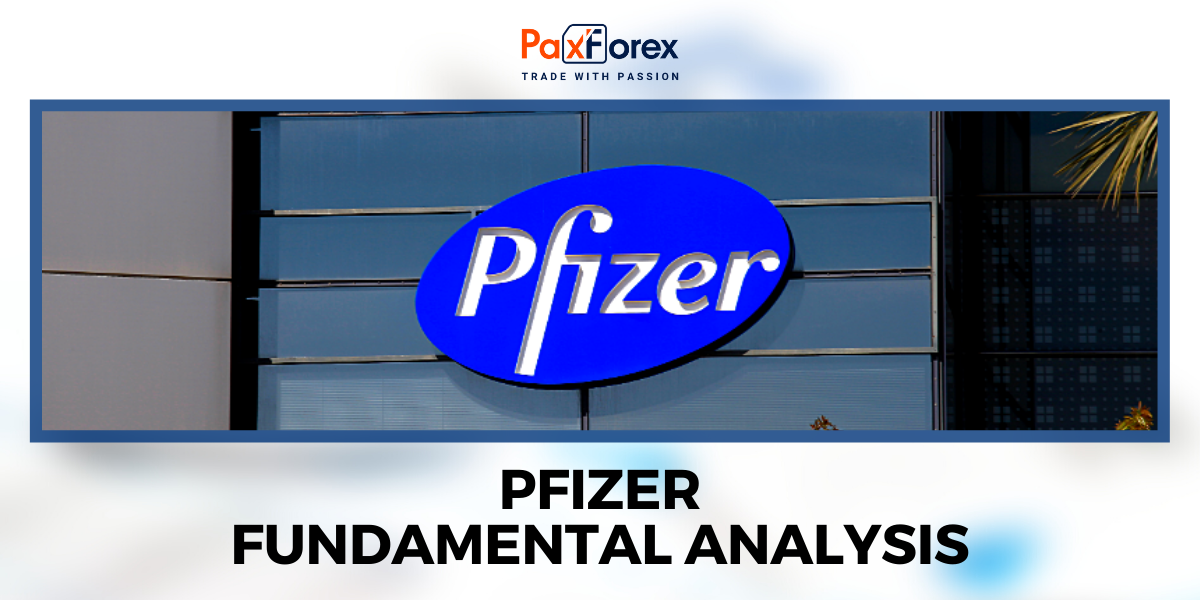
Source: PaxForex Premium Analytics Portal, Fundamental Insight
As the first company to present the coronavirus vaccine, pharmaceutical giant Pfizer made a huge profit by providing primary and repeat vaccines on a global scale. As of the first quarter, the company had circulated 3.4 billion doses of Comirnaty.
Currently, Pfizer is developing a vaccine for another infectious disease with a wide-open market. Let's take a closer look at it.
Pfizer is investing about $95 million in specialty vaccine manufacturer Valneva, based in France. The two companies have been collaborating since April 2020 to develop a vaccine against Lyme disease, VLA15. As per the agreement, Pfizer will receive an 8.1% stake in Valneva, cover 60% of the remaining development costs, and pay Valneva tiered royalties on sales ranging from 14% to 22%, as well as several milestone payments.
The agreement came shortly after the announcement of successful Phase 2 studies conducted on adults and children over five years of age, which showed that the vaccine is safe and elicits a strong immune response. Pfizer intends to continue the phase 3 studies, which will begin in Q3 of this year, to test the initial three-dose series.
If it is launched, VLA15 will be the only vaccine currently available to people to prevent Lyme disease. Nevertheless, it will not be the first Lyme disease vaccine to hit the market. Dogs have been vaccinated against Lyme disease since the early 2000s, and negative side effects are rare.
The human vaccine, LYMErix, was introduced by GSK in 1998 but was taken off the market four years later. The vaccine was highly effective and was originally well-received: 1.4 million vaccinations were given. However, demand fell off amid widely publicized fears that it could cause an autoimmune reaction leading to arthritis, although subsequent studies found no link between the vaccine and arthritis.
The company expects people will be more susceptible this time around because of the increasing prevalence of Lyme disease in North America and Europe. The CDC states that the number of people treated for Lyme disease in the U.S. has tripled in the past 20 years, from just 150,000 in 1998 to about 500,000 in 2018.
These numbers are likely to continue to rise. A warming climate, combined with tick hosts developing a higher tolerance for cold weather, allows ticks to spread to new regions. Infectious ticks now live in half of the United States and are spreading north into Canada. The cost of treating Lyme is projected to be $3 billion by 2031.
The Lyme disease market may not be close to the size of COVID-19, but there is currently no competition in clinical trials. Researchers are studying an mRNA vaccine that directly recognizes tick saliva rather than a specific pathogen such as Lyme bacteria in saliva, which could provide broader protection against tick-borne diseases. But this lab work is still a long way from the clinic, while Pfizer could launch its vaccine in three years.
Pfizer is currently priced extremely attractively, with a price-to-earnings ratio of 12, much lower than most major companies in the health care industry. However, this valuation is based on strong sales of the COVID-19 vaccine Comirnaty and the drug Paxlovid, which accounted for 57% of total revenue in Q1 but are likely to decrease in the future.
These COVID-19 drugs brought in a lot of money, so Pfizer is in a position to aggressively acquire new technologies to replace sales as demand for COVID-19 drops. The $95 million Valneva deal looks modest compared to recent acquisitions of Biohaven for $11.6 billion, Arena for $6.7 billion, and even ReViral for $525 million.
The Valneva agreement may not have a prompt effect on Pfizer's top line, but it will help bolster the late-stage pipeline in a growing market with large unmet needs. Expect Pfizer to continue to make deals to strengthen its long-term earnings prospects.
As long as the price is above the 50.00 level, follow the recommendations below:
- Time frame: D1
- Recommendation: long position
- Entry point: 51.79
- Take Profit 1: 54.50
- Take Profit 2: 57.35
Alternative scenario:
If the level of 50.00 is broken-down, follow the recommendations below:
- Time frame: D1
- Recommendation: short position
- Entry point: 50.00
- Take Profit 1: 47.00
- Take Profit 2: 45.50













